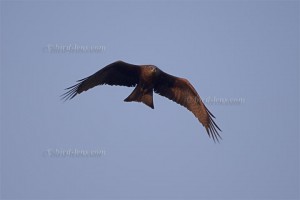 The nature reserve Kuehkopf-Knoblochsaue (in German: Naturschutzgebiet or NSG Kühkopf-Knoblochsaue) is one of the best sites of riparian forest along the river Rhine. The reserve is the largest protected area in Hesse, with 2,369 hectares. It is located on the right bank of the upper Rhine. Towns nearby are Leeheim, Erfelden, Stockstadt and Biebesheim all roughly 60km south of Frankfurt/ Main. The NSG comprises an artificial puncture of the former Rhine floodplain. It is characterized by islands, riparian woods and meadows. Additional features are open water areas, oxbows, mud fields, reed-beds, floodplain meadows and soft wood forest (willows and poplars) and hard wood forest (including oak and elm). The area has a bird list of about 250 species. Approx. 120 species of birds breed here.
The nature reserve Kuehkopf-Knoblochsaue (in German: Naturschutzgebiet or NSG Kühkopf-Knoblochsaue) is one of the best sites of riparian forest along the river Rhine. The reserve is the largest protected area in Hesse, with 2,369 hectares. It is located on the right bank of the upper Rhine. Towns nearby are Leeheim, Erfelden, Stockstadt and Biebesheim all roughly 60km south of Frankfurt/ Main. The NSG comprises an artificial puncture of the former Rhine floodplain. It is characterized by islands, riparian woods and meadows. Additional features are open water areas, oxbows, mud fields, reed-beds, floodplain meadows and soft wood forest (willows and poplars) and hard wood forest (including oak and elm). The area has a bird list of about 250 species. Approx. 120 species of birds breed here.
With fellow ornithologists I organized another birding walk along the banks of the Rhine at Kühkopf a few weeks ago. The goal was to see various species of water birds, the first migratory birds of the spring and the last winter guests. We hoped to observe some of the first Barn Swallows (Hirundo rustica). As in the previous days and weeks, it was pleasant and sunny. Last year, it was still very cold at the same time. The spring in 2013 had been delayed. The walk began with a beautiful observation of a Black Kite (Milvus migrans), who flew directly over our heads. First birds on the water surface of the old Rhine arms could only be seen through the spotting scopes. We found a pair of Garganey (Anas querquedula), several Tufted Ducks (Aythya fuligula). On the wide river itself, the last wintering Common Goldeneye (Bucephala clangula) could be observed. During the walk through the lowland forest, we observed a male Eurasian Marsh-Harrier (Circus aeruginosus) in overflight. The next stop we had a beautiful view on a pair of Common Merganser or Goosander (Mergus merganser); the crests of the birds shone in the sun. We were lucky to see the first Barn Swallows. They were beautiful to see as they flew low over the water surface catching insects for the onward flight to the breeding grounds. With the spotting scope we were looking for some timber logs in some shallow parts of the silted oxbows. We observed three different species of Wagtails. White Wagtails (Motacilla alba), Gray Wagtails (Motacilla cinerea) and even the first Western Yellow Wagtail (Motacilla flava). Another highlight was the first male European Stonechat (Saxicola rubicola), which the trip more than a well experience. More and more Barn Swallows were seen catching insects. They were very active. Two Common sandpiper (Actitis hypoleucos) were spotted on the tree trunks at the edge of a zone sedimentation in a depression in the lowland forest. First, only one of the group was the lucky observer. The Sandpipers stayed hidden behind the trunks and branches in the water. So we could only wait until they were seen again. Chiffchaffs (Phylloscopus collybita) were of course also represented and emitted their loud songs. They were singing in the trees and some of them were just a few meters away. We reviewed a place that otherwise is very productive for Kingfishers (Alcedo atthis). Unfortunately, in vain ; we were not successful. Instead, we found little further on a pasture a Northern Shrike (Lanius excubitor). He perched on a tree. This was an unusual observation for this time of the year, as these shrikes are here normally seen only in midwinter. They should actually already be found on their breeding grounds in the northern and eastern regions of Europe. Apart from ornithological observations , we were lucky also with sightings of European oil beetle (Meloe sp.) and a fungus, the Jew’s Ear (Auricularia auricula – judae). Good was also the botanical yield. Some nice individuals of Lesser Squill (Scilla bifolia) was due to be admired. In Germany, this sub-Mediterranean plant species is already at their limit of distribution. Here, the Lesser Squill or Bluebell grows mainly in the lowland forests of the northern Upper Rhine valley. A successful trip with many opportunities to discover that the spring is coming.